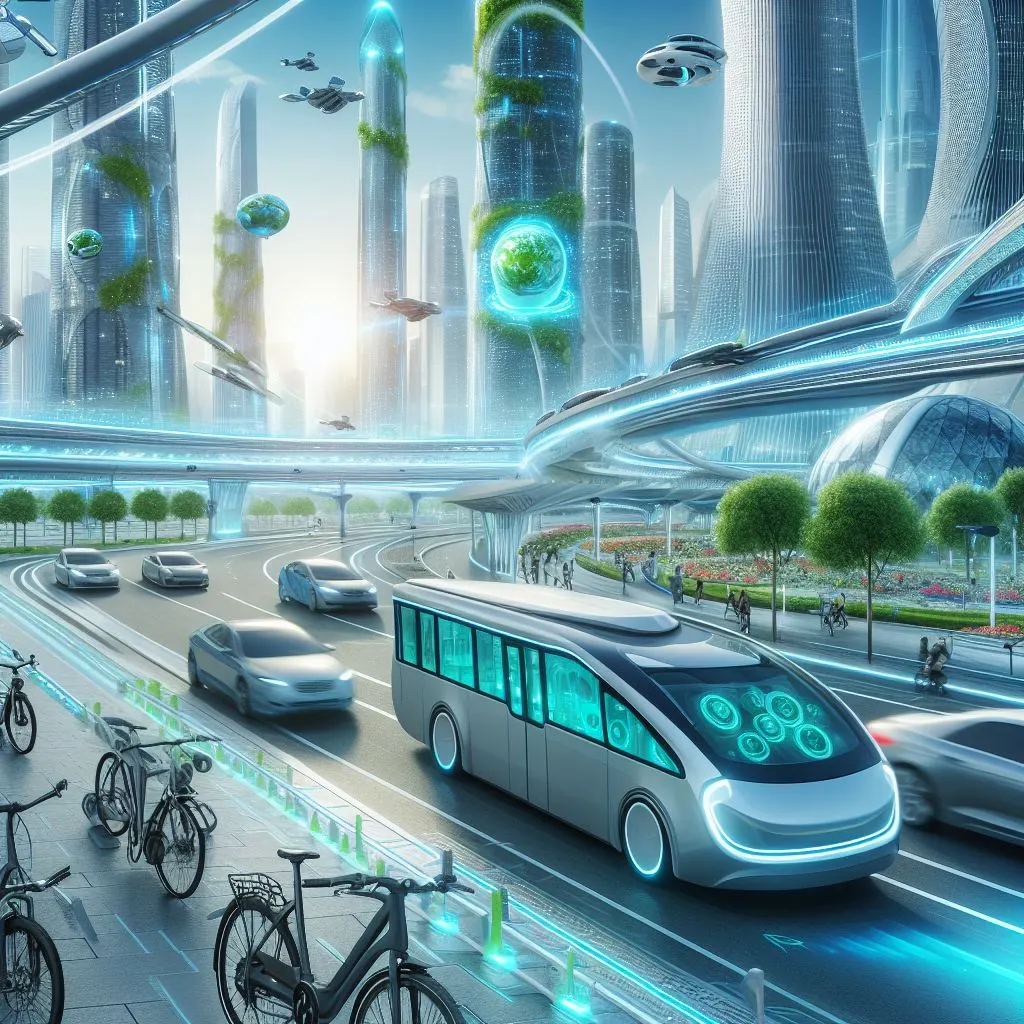In a world facing environmental challenges and the need for sustainable development, the transportation sector is undergoing a significant transformation. This blog explores the future of transportation, focusing on sustainable technology and the rise of electric vehicles (EVs) as key components of a cleaner and greener mobility ecosystem. From innovations in transportation to the widespread adoption of electric cars, we delve into the trends shaping the future of how we move.
Understanding Transportation Innovation
The transportation industry is experiencing a wave of innovation, driven by the urgent need to reduce carbon emissions and mitigate the impacts of climate change. Transportation innovation encompasses a wide range of technologies and solutions aimed at creating more efficient, environmentally friendly, and sustainable modes of travel. From advancements in vehicle design to infrastructure improvements and alternative fuel sources, innovation is reshaping the way we think about transportation.

Key Trends in Sustainable Transportation
- Green Transportation: The shift towards green transportation is gaining momentum as cities and countries worldwide commit to reducing their carbon footprint. Electric vehicles, public transit systems powered by renewable energy, and cycling infrastructure are examples of sustainable mobility solutions that contribute to cleaner air and reduced greenhouse gas emissions.
- Electric Cars: Electric vehicles (EVs) represent a major breakthrough in sustainable transportation. With advancements in battery technology and charging infrastructure, electric cars are becoming increasingly viable alternatives to traditional gasoline-powered vehicles. The growing consumer demand for EVs is driving innovation and investment in the automotive industry, leading to a broader range of models and improved performance.
- Sustainable Mobility: Beyond individual modes of transportation, the concept of sustainable mobility encompasses integrated transportation systems that prioritize efficiency, accessibility, and environmental sustainability. This includes initiatives such as car-sharing programs, ride-hailing services, and the development of smart, interconnected transportation networks.
Electric Vehicle Trends and Innovations:
- Alternative Transportation: The rise of electric scooters, bicycles, and other micro-mobility solutions represents a shift towards alternative transportation options that are both eco-friendly and convenient for urban commuters. These compact electric vehicles offer an efficient means of travel for short distances while reducing congestion and pollution in city centers.
- Zero-Emission Vehicles: The development of zero-emission vehicles is a critical component of sustainable transportation strategies. Hydrogen fuel cell vehicles, for example, emit only water vapor as exhaust, offering a clean alternative to traditional gasoline and diesel engines. As technology advances and infrastructure improves, zero-emission vehicles will play an increasingly significant role in reducing emissions from the transportation sector.
- Sustainable Urban Mobility: Cities are at the forefront of efforts to promote sustainable urban mobility through initiatives such as pedestrian zones, dedicated bike lanes, and integrated public transit systems. By prioritizing walking, cycling, and public transportation over private car use, urban areas can reduce traffic congestion, improve air quality, and enhance overall quality of life for residents.

Electric Vehicle Infrastructure and Adoption:
- Charging Infrastructure: The availability of electric vehicle infrastructure is essential for the widespread adoption of EVs. Charging stations, both public and private, play a crucial role in supporting long-distance travel and alleviating range anxiety among EV owners. Investments in charging infrastructure are essential to accelerate the transition to electric transportation and make EVs more accessible to all.
- Sustainable Transportation Systems: Achieving truly sustainable transportation requires a holistic approach that addresses not only the vehicles themselves but also the broader sustainable transportation systems in which they operate. This includes investments in public transit, walking and cycling infrastructure, urban planning policies, and land use strategies that prioritize compact, mixed-use development.
- Policy and Regulation: Government policies and regulations play a significant role in shaping the future of transportation. Incentives such as tax credits, rebates, and subsidies can encourage consumers to adopt electric vehicles, while emissions standards and vehicle efficiency regulations can drive innovation and investment in cleaner, more fuel-efficient vehicles.

Conclusion:
The future of transportation is electric, sustainable, and interconnected. By embracing transportation technology and investing in renewable energy sources, we can create a more environmentally friendly and efficient mobility ecosystem. From electric cars and alternative transportation options to smart infrastructure and sustainable urban planning, the possibilities for a cleaner, greener future are endless. As individuals, communities, and governments work together to address the challenges of climate change and air pollution, sustainable transportation will play a vital role in shaping a healthier, more sustainable world for generations to come.